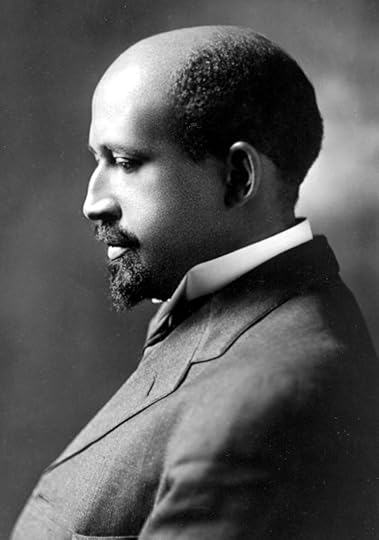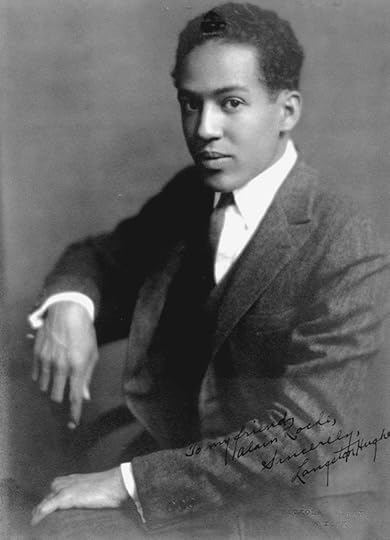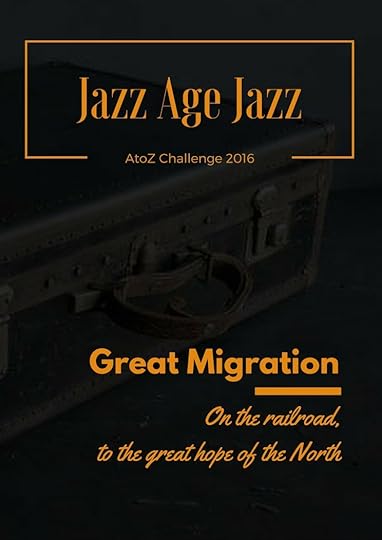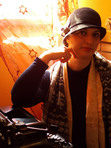Great Migration (AtoZ Challenge 2016 – Jazz Age Jazz)
JAZZ AGE JAZZ - The Great Migration #AtoZChallenge #jazz travels North to Chicago and NYC
Click To Tweet
 There’s a romantic story which tells of how jazz came up North, particularly to Chicago, on the Mississippi riverboats after Storyville was closed down in New Orleans in 1917.
There’s a romantic story which tells of how jazz came up North, particularly to Chicago, on the Mississippi riverboats after Storyville was closed down in New Orleans in 1917.
History is a lot less charming. Jazzmen came to the North the same way and for the same reasons multitudes of other African Americans did in the years between the 1910s and the 1940s. It was later called the Graet Migration.
 WEB DuBois was one of the most influencial black leaders of the beginning of the XX century and one of the stronger opposers to jazz
WEB DuBois was one of the most influencial black leaders of the beginning of the XX century and one of the stronger opposers to jazzAt the beginning of the XX century, crops failed for several years in the Southern States due to bug infection. At the same time the demand for jobs raised in the North since during WWI European immigration had virtually ceased, diminishing the supply of unskilled labour.
Black newspapers – notably the Chicago Defender – actively advertised this demand for workers in the North and campaigned so that African Americans left the South for the more liberal North. The Defender was actually so proactive that it was banned in many Southern communities who feared that the departing of so many young black men and women would leave them without unskilled labour.
But life in the North didn’t prove as good as many hoped for. True, Northern States didn’t have legal segregation, but discrimination often jammed African Americans into crowded inner city neighbourhoods. Many of these northern communities had been quite small before the Great Migration and had merged in a more or less seamless way in the fabric of big cities. But the Great Migration made the number of African Americans bulge in many cities, which created tension inside and outside those communities. Coexistence between old settlers and newcomers became very difficult. The rural culture of the new immigrants from the South was very different and in many ways less refined than that of African Americans who had lived in the North for generations. Newcomers were criticized for their “primitive behaviour” and accused of attracting negative attention to the community. They were also criticised for their preference in the matter of entertainment, since they seemed to prefer speakeasies and the new music like jazz, but also blues, because it reminded them of home, but were often connected with vice in the mind of many people. Many welfare associations, such as the Urban League, tried to counter this idea by organising alternatives, more ‘wholesome’ activities for the newcomers, so to battle the impression that vice equated ‘black community’.
 One of the most influencial artists of the Harlem Renaissance, Langston Hughes used jazz as a language in his writing
One of the most influencial artists of the Harlem Renaissance, Langston Hughes used jazz as a language in his writingWhen New Orleans and other hot style musicians moved North, their status of newcomers produced new objections to jazz. It was wild and primitive, it didn’t sound like music and it was performed in disreputable places with underworld connections. The average Negro family did not allow that kind of music.
The large numbers of migrants created distinctive black communities throughout the North. In the 1920s, more than 75.000 black Americans moved to New York City’s upper
Manhattan area, making Harlem the “Negro Capital of the World”. It was in Harlem that African American art flourished more fully in the movement that came to be known as the Harlem Renaissance.
Home to nightclubs and fledging recording companies, Harlem was also the centre of African American writers, artists and spokespersons of the Harlem Renaissance.
Most musicians were not given the same recognition as writers, though, and on their part – and maybe in response to that – jazz musicians don’t seem to have paid much attention to the manifestation of artistic pride.
It was in Harlem that a deeper, more complex debate about jazz took place. Harlem Renaissance leaders generally dismissed jazz as a lower music. Some leaders disdained it because of its identification with vice, crime and migrants’ “backwardness”. And when Primitivism became a fashion, many black leaders criticised jazz and the entertainment it produced for reinforcing the negative stereotypes Primitivism seem to encourage.
On the other hand, prominent Harlem Renaissance intellectuals praised jazz and blues as a new language, a new means of communication atoned to the new times, and they tried to assimilate it into their novels, poems and paintings. This evocation of jazz usually included a recognition of the participatory and expressive tradition of blues and jazz.
Popular as it was, jazz didn’t have an easy life in the 1920s.
—————————————————————————————————————————————-
RESOURCES
Ogren, Kathy J., The Jazz Revolution. Twenties America and the Meaning of Jazz. Oxford University Press, New York, 1989
University of Chicago Library – Chicago, Jazz and the Great Migration
Jazz in America –
Music in the World – How the Great Migration effected the development of Blues music
Synonim – The Great Migration and the Roaring Twenties
Shmoop – Society in Blues Music History
Smashwords | Barnes&Nobles | Kobo | iBookStore
And many other stores
The post Great Migration (AtoZ Challenge 2016 – Jazz Age Jazz) appeared first on The Old Shelter.





